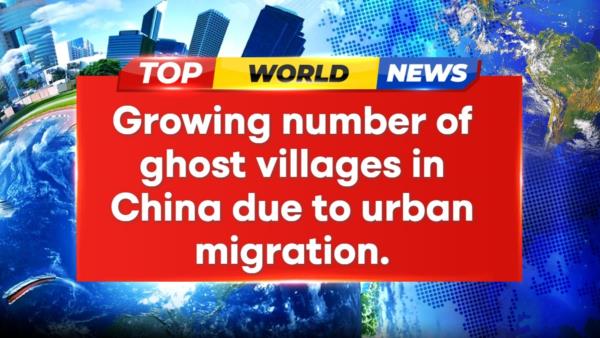
As more people in China move to cities to find work and raise families, a growing number of communities are becoming ghost villages. Once vibrant and bustling with life, these places now stand abandoned, home only to wildlife and decaying buildings.
In rural China, the effects of mass urbanization are starkly visible. A recent visit to a ghost village located just 40 miles from Beijing showcases the impact of this transition. What was once a thriving village is now a shadow of its former self, with houses overgrown with weeds and remnants of past inhabitants scattered throughout.
The shift towards urban living in China has been significant. In the 1980s, only about 20 percent of Chinese families resided in cities. Today, that number has surged to nearly 70 percent, reflecting a massive migration from rural to urban areas.
However, this rapid urbanization has not come without consequences. As young people flock to cities in search of better opportunities, many are leaving behind aging parents and even children in rural villages. This has led to a social and economic transformation across rural China, with once-thriving communities now facing decline and abandonment.
The Chinese government's push for modernization and development has been a driving force behind this urban shift. In an effort to keep pace with Western nations, China has prioritized industrialization and urban growth, leading to the abandonment of traditional rural lifestyles.
The phenomenon of ghost villages serves as a poignant reminder of the complexities and challenges associated with mass urbanization. While progress and development are essential for a country's growth, it is crucial to consider the impact on rural communities and the need for sustainable development strategies that benefit all segments of society.







